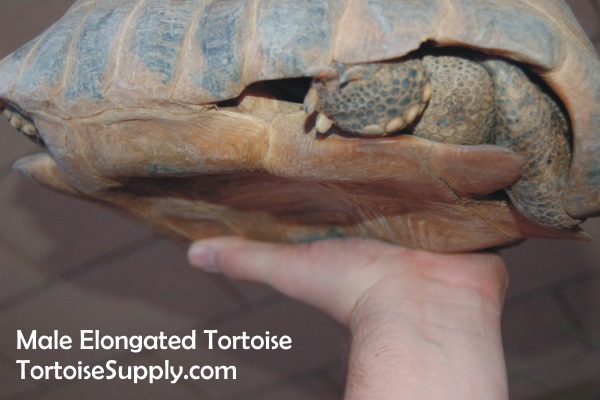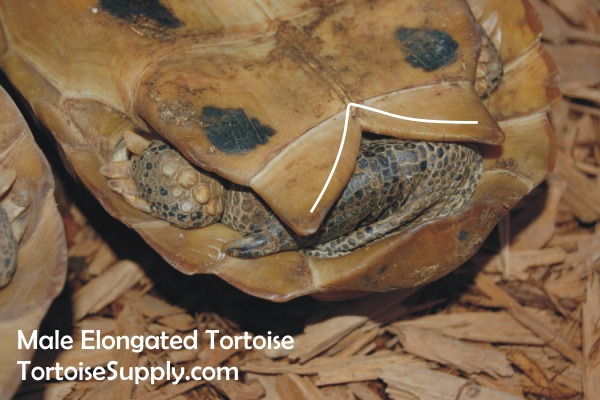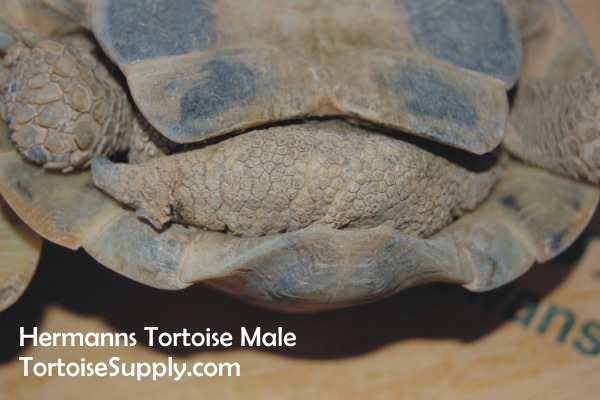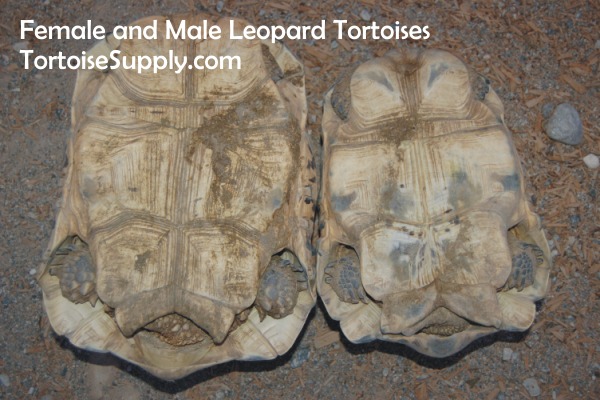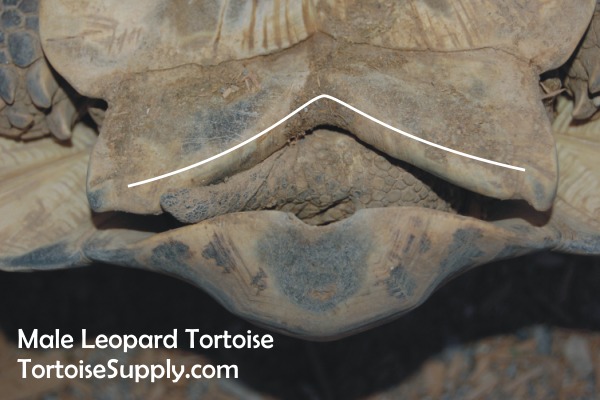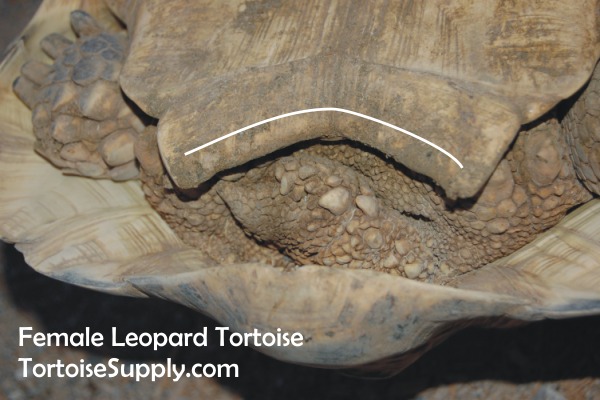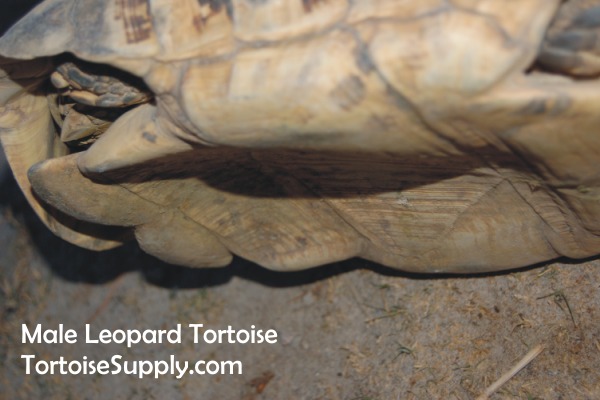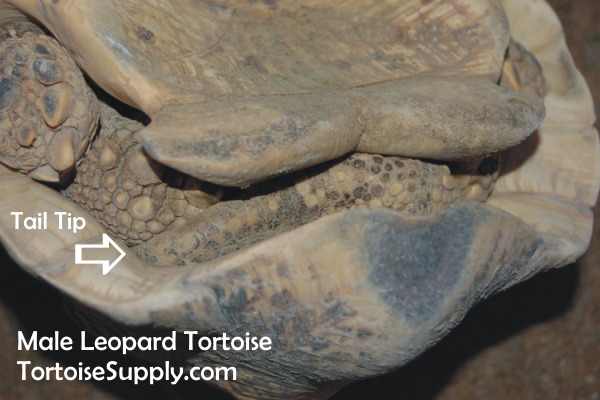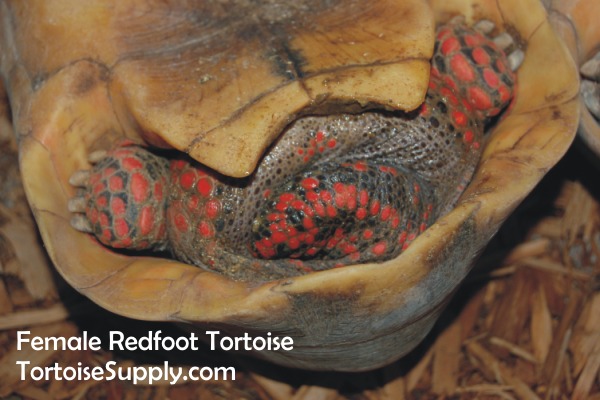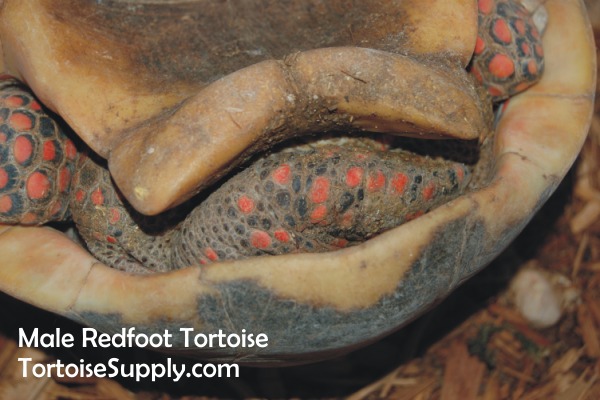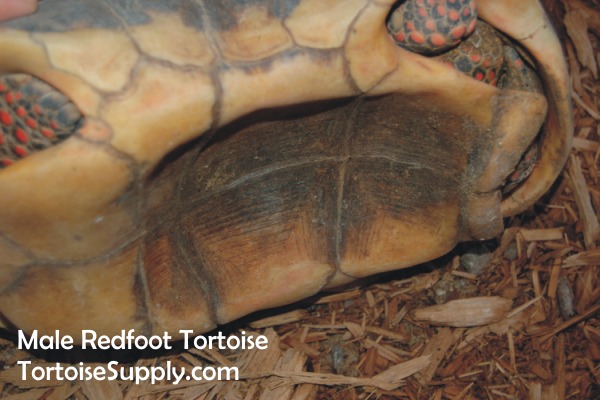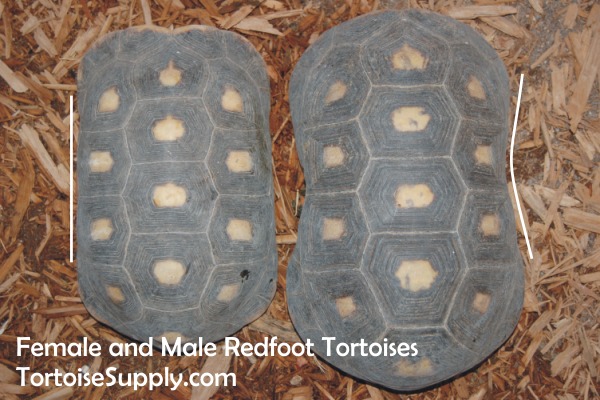Sexing Your Tortoise
(work in progress, will be complete soon)
Determining the Sex of Your Tortoise
Because of the differences in the ways that different species can be sexed, we wanted to put together a page showing many different species, and the things to look for when sexing a particular species. We often hear "males have a concave stomach" or things like "males have longer tails," both of which are generally true, but do not apply in some species. Here are species-specific photos and things to look for that will hopefully help you determine what sex you have.
-----
Elongated Tortoises
Sexing elongated tortoises is most quickly done by comparing the tail length of animals to each other. Like most tortoises, adult males will have much longer tails. The males of this species do not have a huge amount of concave to their bellies, but they do have some. The females in this species will have a slight "U" shape in the shell notch around their tail, where the males will have more of a "V" shape, with the shell curving outward to the sides (lower two photos illustrate this). Generally in younger animals, I rely more on tail length, since the concave stomach and final notch shapes don't show up until much later in life. Within our group, our biggest animals are the males. Our females tend to be lighter in overall color, where our "blackest" ones are all males. Our males also tend to be higher domed than our females, on average. I have never heard of the color or the dome shape being a recognized way to sex these tortoises, but I have noticed it within our group of about 20 adult tortoises.
-----
Greek Tortoises
-----
Hermanns Tortoises
Hermanns tortoises are most easily sexed by their tail length. Males will have much larger tails than females. Female hermanns tortoises tend to be larger than males. Males in this species do not have a noticeable concave belly like many tortoises do. The rear of the shell on males tends to curve inward, under the tortoise, where females generally end pointing straight down at the ground.
-----
Indian Star Tortoises
-----
Leopard Tortoises
Sexing leopard tortoises can be done in a few ways, but females are generally quite a bit larger than males when full grown. Females will tend to be higher domed, and more rounded in shape. Males will have longer tails than females, which usually only have a small nub tail as adults. The notch around the tails of female leopard tortoises will be "U" shaped, where males will be "V" shaped, often very extremely pointed outwards (the middle photos below show examples). Males will have a concave belly, where female's bellies will be flat. Leopards are a tortoise that can be difficult to sex even at their middle sizes. Generally, once a leopard tortoise has a long tail, you can call it a male. I have seen many of these tortoises maintain a short tail until 8" size or so, when it then grew quickly in size. Also, I have seen at least twice large sized male leopard tortoises that had the perfect shell notch of a female (they had the same "U" shape as the photos below). They were, in fact, males. I don't put much weight on the shell notch shape with these tortoises when they have long tails. When relying on the notch shape, if their notch flares out in a "V," they're males. If it has a U shape, they're probably females (but you should rely on something else like tail length or concave belly to confirm). I've never seen a female with a "V" shape.
-----
Pancake Tortoises
Pancake tortoises are best sexed with one single method - the tail length. Males have long tails that curve into the leg area, while the females will maintain a short nub tail. While our females tend to be "prettier" and lighter in overall color than our males, I don't think this is a reliable method in sexing them. They do not show a concave stomach or much else to differentiate males from females.
-----
Redfoot Tortoises
Redfoot tortoises are a species that has multiple different ways to determine the sex of. Like most species, the tail length is a quick easy way to determine the sex. Male redfoots tails will be long and thick, and will curve tightly against the back leg. Redfoot males, as adults, will have a strong concave stomach, where females will be flat on bottom. These tortoises also have a slightly different shape when viewed from above; the males will have somewhat of an "hourglass" shape (illustrated in the lower right photo below), with the sides of their shells sucking in, and their widest parts being the four corners of their shells (this waistline method does not apply in cherryhead redfoots). Unfortunately, the rear shell notch method is a little tricky with redfoots because both sexes will have a "U" shape to their anal notch. Males will have a wider notch, but it's difficult to see unless you have experience with them or are comparing animals of known sex, which makes the difference more obvious. When sexing younger redfoots, I tend to rely most on tail length; particularly comparing the space between the tail tip and the "vent." Females will have a shorter distance between these than males will (females tails come to an abrupt end, where males have a longer, thinner tail tip). This isn't reliable at all until the tortoises are in the 4-5" range.
-----
Russian Tortoises
-----
Sulcata Tortoises
-----
Yellowfoot Tortoises
-----


